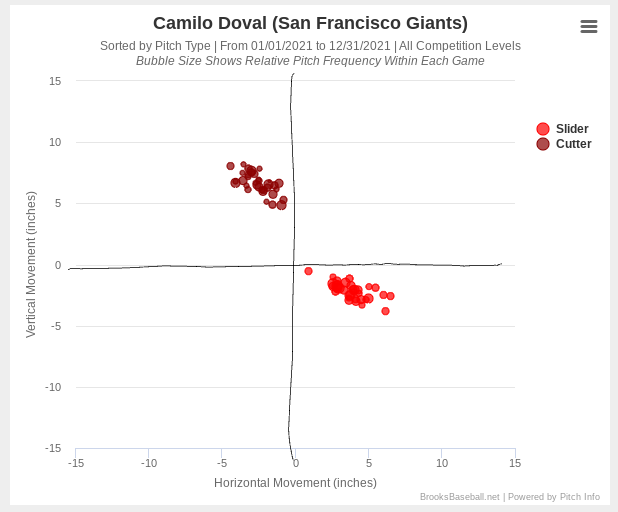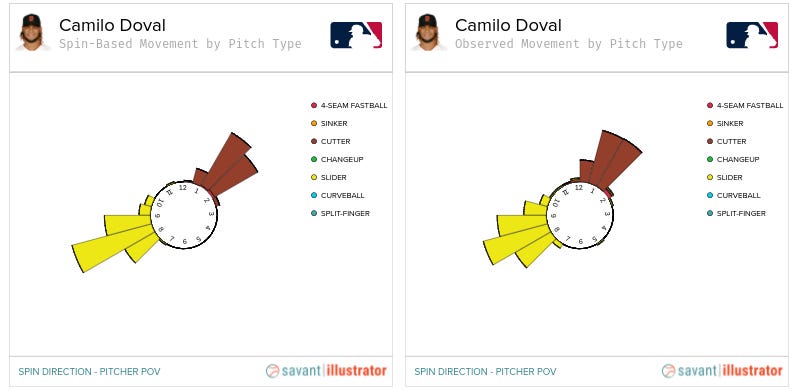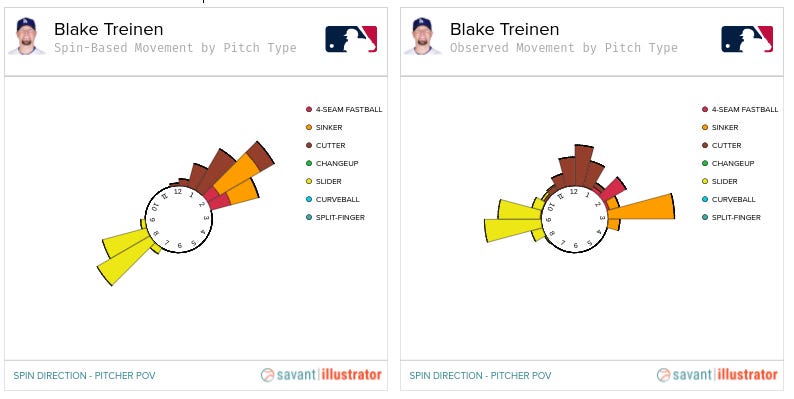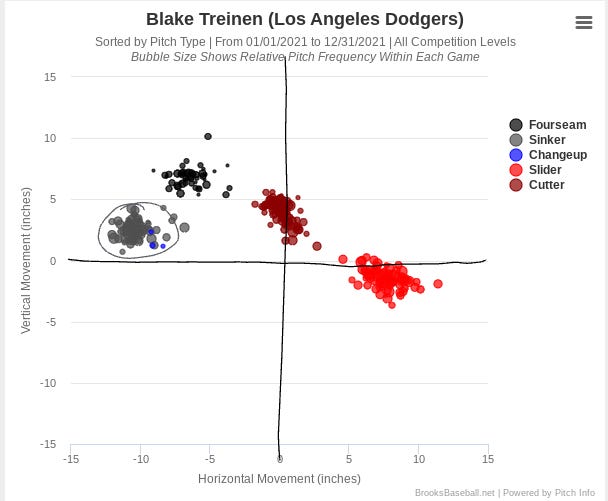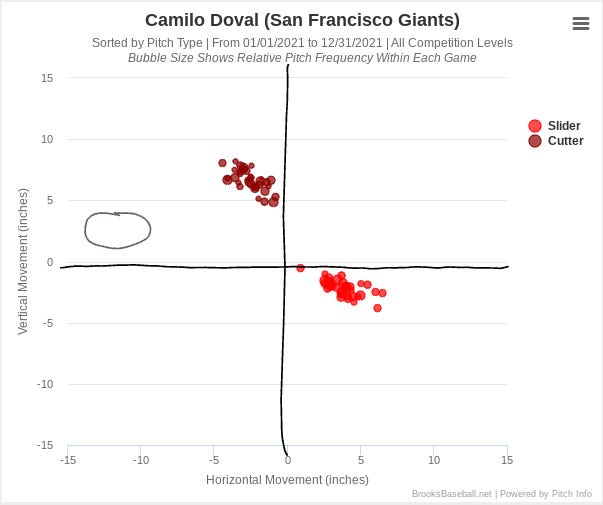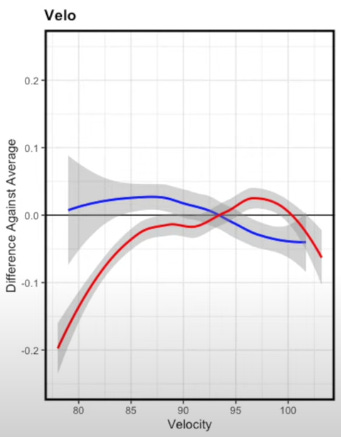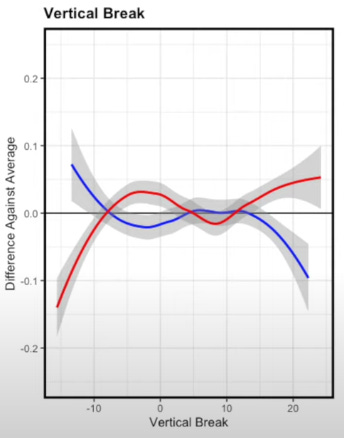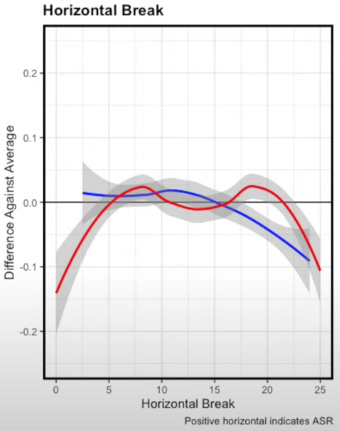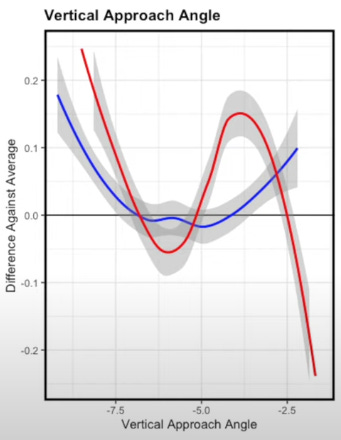Pitch Analysis + Design: Camilo Doval
(4/14/22) Camilo Doval might be a Sinker away from becoming one of the best relievers in Major League Baseball.
Originally published on Medium on April 14, 2022
To many baseball observers, the San Francisco Giants were one of the biggest surprises of the 2021 Major League Baseball season. Winning 107 games and nearly defeating the Los Angeles Dodgers in the NLDS, the San Francisco Giants showed with their dominant pitching and deep lineup that they will be contenders in the National League for years to come. One pitcher in the San Francisco Giants bullpen that is of great interest to me is Camilo Doval. Signed as an international free agent in 2015, Doval appeared in 29 games for the Giants last year (his rookie season), producing a SIERA of 2.75 and WHIP of 1.037 in 27 innings pitched. Doval also had a strikeout rate of 33.9%, walk rate of 8.3%, and home run rate of 3.7% last season. Already utilizing two very good pitches in his pitch arsenal, the addition of a third pitch will turn Camilo Doval into one of the best relievers in Major League Baseball.
Camilo Doval currently possesses a pitch arsenal of two pitches: a Cutter and a Slider (FanGraphs classifies the Cutter as a Four Seam Fastball, but for sake of consistency within the analysis I will be using the Baseball Savant classification). Displayed below are charts displaying the locations of his pitches (provided by Savant), a scatter plot displaying his pitches horizontal and vertical movement (provided by Brooks Baseball), and a table breaking down the velocity and spin rates of these pitches (also provided by Savant). The first two charts are from the catcher’s perspective
Cutter:
Doval’s Cutter averages ~98.6 MPH with ~4.3 inches of horizontal movement and ~15.1 inches of vertical movement. In 2021, his Cutter possessed a spin rate of 2574 RPM, which equals 26.11 Bauer Units. Given the high amount of spin that Doval possesses on this pitch, it is great to see that he is primarily throwing his Cutter in the upper half of the zone since this is where this type of pitch is most effective. This pitch also pairs very well with his Slider, and as these overlays by Rob Friedman show, Doval does an effective job at tunneling these pitches together.
Slider:
Doval’s Slider averages ~86.5 MPH with ~6.8 inches of horizontal movement and ~38.3 inches of vertical movement. In 2021, his Slider possessed a spin rate of 2511 RPM, which equals 29.03 Bauer Units. Similar to his Cutter, Doval’s Slider possesses elite spin which allows him to have great success utilizing this pitch. This past season, opponents had a wOBA of .207 (xwOBA = .223) and a Whiff rate of 40.3% against his Slider. Producing a Run Value of -6, these clips show how dominant Doval can be while utilizing this pitch.
New pitch — Sinker:
In order to become one of the best relievers in Major League Baseball, Doval should develop a Sinker in order to achieve some arm side movement that his current pitches do not generate. In order to identify a pitcher to model Doval’s new pitch off of, I searched for a right handed pitcher who had similar Spin-based and Observed movement on their Cutter and Slider. As shown in the diagrams below, I was able to identify some similarities between Doval and Blake Treinen, one of the best relievers in all of Major League Baseball.
Treinen possesses a Sinker with ~18.1 inches of horizontal movement and ~23.1 inches of vertical movement. The pitch averages ~97.4 MPH with a spin rate of 2231, equaling 22.9 Bauer Units. As shown in the scatter plot displayed below, if Doval is able to develop a Sinker similar to the one that Treinen utilizes, this pitch will both satisfy his need for a pitch with arm side movement, and create significant differentiation from his Slider.
When analyzing this proposed Sinker for Camilo Doval alongside the Sinker’s inflection points, it appears that this pitch has the ingredients to be a valuable piece of Doval’s arsenal moving forward. As shown by the graphs below (provided by Tread Athletics), Doval’s velocity of ~98 MPH will be sufficient to minimize wOBA and maximize Whiff%. The projected vertical movement of the pitch will also be enough to similarly minimize wOBA and maximize Whiff%. When it comes to horizontal movement, the pitch’s projected movement profile does not maximize Whiff%, but it does maintain a near average wOBA which is satisfactory in my opinion given the nature and usage of the Sinker. In terms of Vertical Approach Angle (VAA), I do not have access to this information as it is not publicly available, so I have included the chart solely for reference sake.
In terms of pitch usage, given Camilo Doval’s success with the Cutter and Slider, I would not suggest a dramatic change to his current pitch distribution. If Doval could develop and utilize his Sinker for ~10% of his total pitches (at least initially), then this will provide him with more flexibility within his pitch arsenal.
In conclusion, Camilo Doval is already a valuable piece of the San Francisco Giants bullpen. With the addition of a third pitch, a Sinker, might just be what Camilo Doval needs in order to become one of the best relievers in all of Major League Baseball.
Follow @MLBDailyStats_ on X (Twitter) for more in-depth MLB analysis. Statistics provided by Baseball Savant, Brooks Baseball, and Tread Athletics.




